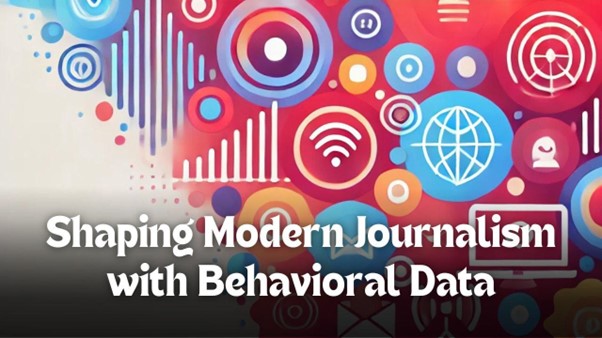
Journalism has always evolved alongside advancements in technology, but few innovations have had as profound an impact as the Internet of Behaviors (IoB). IoB refers to the collection and analysis of data from online user behavior, providing insights that influence how content is shaped and delivered. For media outlets, including modern journalism platforms, understanding IoB is becoming essential in shaping news content to meet the expectations of an increasingly digital audience.
In an era where consumers demand personalized content, IoB enables media companies to understand what stories capture the most attention, how audiences interact with different types of content, and what triggers engagement. According to a study on IoB by ExpressVPN, the ability to analyze user behavior is becoming central to the strategies of newsrooms worldwide.
The traditional methods of delivering the news have evolved drastically. While print and TV were once the dominant forms of media, today's journalism is digital, with audiences consuming content across social media platforms, websites, and apps. This shift has led to the adoption of IoB, where media outlets monitor user behavior to inform decisions on story placement, headline writing, and even topic selection.
Understanding the Internet of Behaviors allows media organizations to adapt quickly to trends. For example, when a specific news topic begins to gain traction online, journalists can quickly pivot, providing in-depth coverage on topics that are likely to attract more views and engagement. This has led to a more responsive approach to news delivery, ensuring that content aligns with real-time audience interests.
One of the most significant impacts of IoB in journalism is the ability to provide personalized news content. By analyzing the reading habits of individuals, news platforms can deliver articles that match the reader's preferences. Whether it's news related to politics, sports, or entertainment, IoB makes it easier for media outlets to cater to a specific audience.
For example, a platform might notice that a reader consistently clicks on articles about climate change and environmental issues. With the help of IoB, that reader will likely see more news articles on those topics in their feed, keeping them engaged with content that resonates with their interests.
IoB's impact extends beyond just content personalization; it also helps media outlets improve audience engagement. By tracking how long readers stay on a page, what sections they scroll through, and what they share on social media, media companies can optimize the structure and style of their content. Engaging readers is no longer a guessing game—it’s about data-driven decisions.
Additionally, IoB can help journalists understand the types of content that drive the most interaction. Whether it's a breaking news story or an in-depth investigative piece, IoB helps media outlets tailor their approach, ensuring that readers remain engaged and continue returning to the platform for more content.
While IoB offers numerous benefits for journalism, it also raises ethical questions. The use of behavioral data can be seen as intrusive, especially if media companies are not transparent about how they collect and use the information. As IoB becomes more prevalent, it’s crucial for news platforms to handle data responsibly and protect the privacy of their readers.
To learn more about how IoB is influencing various industries, including journalism, take a look at GeeksforGeeks overview of IoB from a technology perspective.
The Internet of Behaviors is undeniably transforming modern journalism. As media companies continue to leverage data to enhance content delivery and audience engagement, the future of news will become increasingly personalized and responsive. For journalists and media outlets, understanding IoB isn't just a technological advantage—it's an essential part of staying relevant in the digital age.